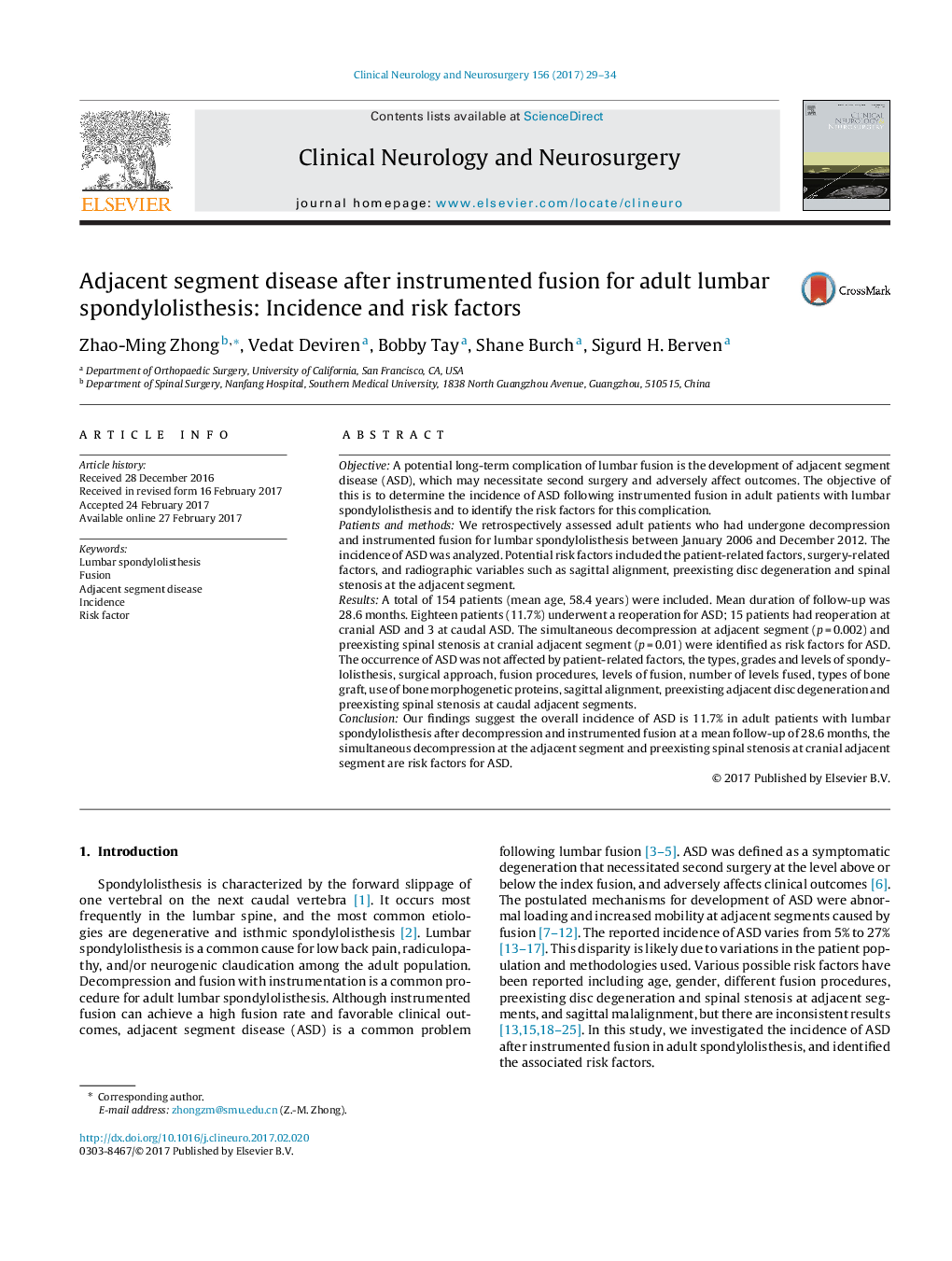| Article ID | Journal | Published Year | Pages | File Type |
|---|---|---|---|---|
| 5627115 | Clinical Neurology and Neurosurgery | 2017 | 6 Pages |
â¢ASD is defined as a symptomatic degeneration that necessitated second surgery at adjacent segments of index fusion.â¢ASD is a potential long-term complication of lumbar fusion and adversely affects clinical outcomes.â¢Overall incidence of ASD is 11.7% after instrumented fusion in adult patients with lumbar spondylolisthesis.â¢Simultaneous decompression at adjacent segments is a risk factor for developing ASD.â¢Preexisting spinal stenosis at cranial adjacent segment is a risk factor for developing ASD.
ObjectiveA potential long-term complication of lumbar fusion is the development of adjacent segment disease (ASD), which may necessitate second surgery and adversely affect outcomes. The objective of this is to determine the incidence of ASD following instrumented fusion in adult patients with lumbar spondylolisthesis and to identify the risk factors for this complication.Patients and methodsWe retrospectively assessed adult patients who had undergone decompression and instrumented fusion for lumbar spondylolisthesis between January 2006 and December 2012. The incidence of ASD was analyzed. Potential risk factors included the patient-related factors, surgery-related factors, and radiographic variables such as sagittal alignment, preexisting disc degeneration and spinal stenosis at the adjacent segment.ResultsA total of 154 patients (mean age, 58.4 years) were included. Mean duration of follow-up was 28.6 months. Eighteen patients (11.7%) underwent a reoperation for ASD; 15 patients had reoperation at cranial ASD and 3 at caudal ASD. The simultaneous decompression at adjacent segment (p = 0.002) and preexisting spinal stenosis at cranial adjacent segment (p = 0.01) were identified as risk factors for ASD. The occurrence of ASD was not affected by patient-related factors, the types, grades and levels of spondylolisthesis, surgical approach, fusion procedures, levels of fusion, number of levels fused, types of bone graft, use of bone morphogenetic proteins, sagittal alignment, preexisting adjacent disc degeneration and preexisting spinal stenosis at caudal adjacent segments.ConclusionOur findings suggest the overall incidence of ASD is 11.7% in adult patients with lumbar spondylolisthesis after decompression and instrumented fusion at a mean follow-up of 28.6 months, the simultaneous decompression at the adjacent segment and preexisting spinal stenosis at cranial adjacent segment are risk factors for ASD.
